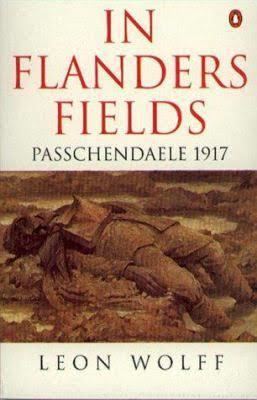8 /10 1 Votes8
| 4/5 Goodreads | |||||||||||||||||||||||||||||||||
 | ||||||||||||||||||||||||||||||||||
World War II books A Bed For The Night: Humanita, Air Battle Dunkirk, Snow and Steel: The Battle of t, Legs‑Eleven: Being the Story of th, Men at War: What Fiction Te | ||||||||||||||||||||||||||||||||||
In Flanders Fields: The 1917 Campaign is a history of the 3rd Battle of Ypres by Leon Wolff published in 1958 with an introduction by Maj. Gen. J. F. C. Fuller, CB, CBE, DSO. A re-edition of the book was included in the Time-Life Reading Program in 1963, with an additional introduction by B. H. Liddell-Hart. A "Penguin Books" edition was published in 1979 "with minor emendations". Based on this a "Folio Society" edition was published in 2003 by "Cambridge University Press"
Synopsis
The first chapter "The Deadlock" is a brief description of the causes and events of World War I leading up to the year 1917. It details the military plans of the year by the French, British and German High Commands with considerable references to the diaries and official histories of the commanders and countries involved, the press, journalists, historians and political figures. There are maps and photographic plates of the battlefields in the book.
The Third Battle of Ypres is covered from the perspective of the high commands: the British Prime Minister of the day, Lloyd George, Sir Douglas Haig, Sir William Robertson, Robert Nivelle, Ferdinand Foch and others. There are short quotes from newspapers of the day and soldiers at the front, with sketches of the actual battlefield, compared with the views at Headquarters. Wolff gives official minutes of meetings with Lloyd George and the War Cabinet and diaries of high officers. If tacitly, Haig is implied as making large assumptions without intelligence about the German defences, enemy resources of men and guns, or the conditions of the battlefield.
The book also details the battles of 1917, from Nivelle's offensive and the French Army Mutinies (1917), Messines Ridge, Poelcapelle, Menin Road, the village of Passchendaele (fought by the Canadian Corps) and Ypres. It ends appropriately with a sequel of the end of the careers, and life after of Sir William Robertson, Sir Douglas Haig and David Lloyd George, quoting a line of Siegfried Sassoon's "On Passing the New Menin Gate" and ending finally with a satirical passage on war from Sartor Resartus by Thomas Carlyle
